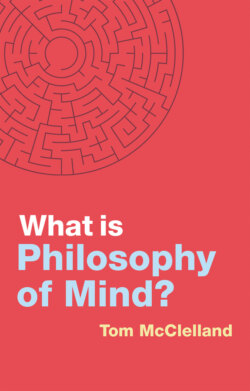Читать книгу What is Philosophy of Mind? - Tom McClelland - Страница 11
1.4.1 The Mind and Matter Question
ОглавлениеThe Mind and Matter Question invites us to make sense of how the mind fits into the material world. The material world is the world of matter – of physical objects distributed in space and time and governed by the laws of physics. Material objects include everything from molehills to mountains to meteors. But all these different things are made out of the same kind of stuff, namely matter. If you want to know about matter, ask a physicist. They’ll tell you that there’s a small set of fundamental particle types – things like quarks and leptons – that make up the entire universe. And the behaviour of those particles is governed by a small set of physical laws. Think of it like a giant Lego set: from a few types of brick and some basic rules governing how they fit together, a near-infinite variety of things can be made. To be a material object is to be either one of the basic physical building blocks of the material world, or to be something made out of those basic physical building blocks. So our question is whether the mind is constituted by physical building blocks or whether it introduces a whole new immaterial constituent to reality.
Materialists (aka physicalists) claim that there are no immaterial entities: that everything in the universe is constituted by the great material Lego set. Minds are no exception to this. Mindy’s mind is constituted by a material object – presumably her brain. The challenge for the materialist is to make sense of how this could be so. How can Mindy’s beliefs be a state of Mindy’s brain? How can her decisions be a neural process? How can her perceptions be a sparking of neurons? Dualists adopt the anti-materialist view that the world includes at least some immaterial entities, namely minds. Distinct from Mindy’s physical body is a non-physical mind – something that cannot be constituted by the physical building blocks described by physics. The challenge for the dualist is to make sense of where immaterial minds come from and how they’re connected to the brain.
A key battleground for materialists and dualists is causation. Mindy’s visual experience is caused by physical events such as light hitting her retina in a particular way. And Mindy’s intention to kick the ball causes the physical event of her kicking it. How can we make sense of these causal interactions? For materialists, these interactions take place within the material world. The story of Mindy’s penalty kick is a completely physical story, and the challenge for materialists is to make sense of how Mindy’s mental states fit within that story. For dualists, these interactions take place between physical and non-physical things. The story of Mindy’s penalty kick involves both events in the material world and events in Mindy’s immaterial mind, and the challenge for dualists is to make sense of how these two kinds of event hook up. The challenges here run deep, and both sides must confront the possibility that the apparent interactions between mind and body are not as they seem. Perhaps Mindy’s perceptual experiences aren’t really caused by her environment and perhaps her intentions aren’t really the cause of her actions. This is a threat we’ll be coming back to throughout the book.
How we answer the Mind and Matter Question can have huge implications for how we see ourselves and how we live our lives. Do we have a special place in nature, standing apart from the world of material entities, or is the mind smoothly continuous with the rest of the material world? Do we come into existence when our brain comes into existence or might our minds predate our bodies? Do we die when our body dies or could the mind survive our bodily death? Are we really responsible for our actions or is our behaviour outside our control? Each of these urgent questions comes back to the core question of how mind and matter are related.
